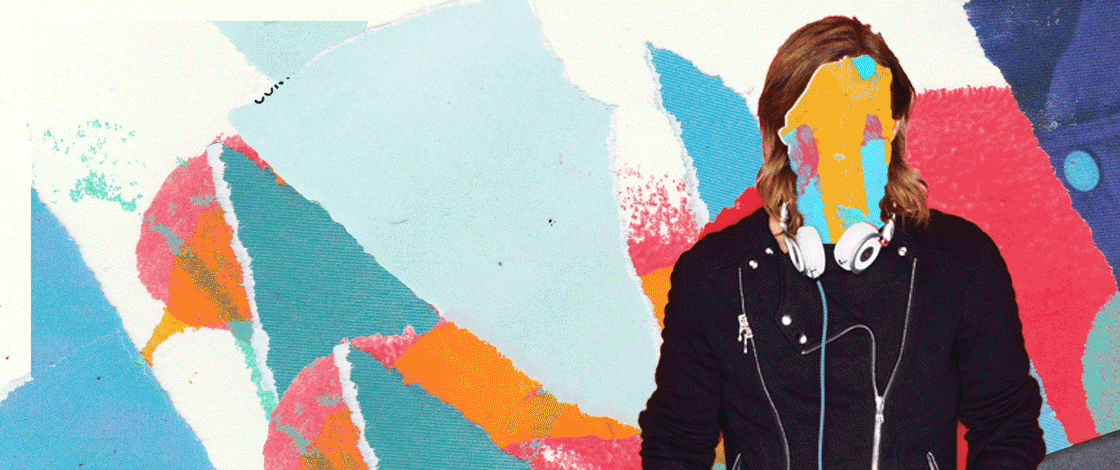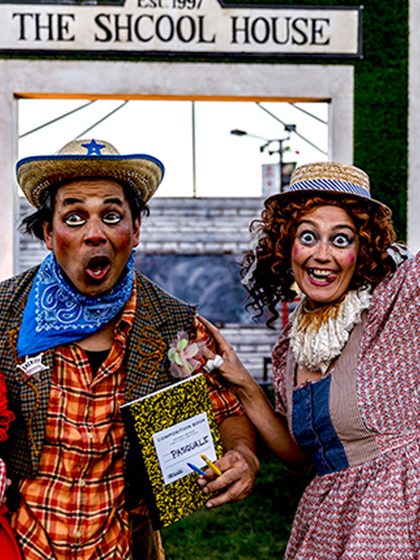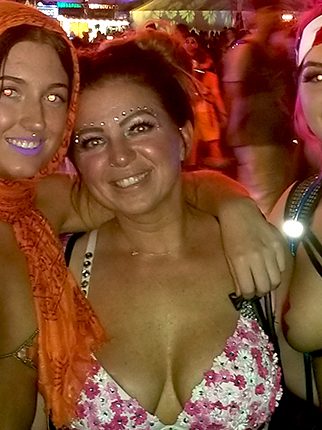Beyond Lineups: Achieving the Ultimate Festival Experience

I do my best to read the hard copy of Mixmag from cover to cover every month. Being the longest standing editorial outlet dedicated strictly to dance music—and perhaps more importantly, dance music culture—the publication has the best writing and insight into the genre, and it somehow manages to find new things to say about the scene after 33 years. But while the articles remain fresh issue after issue, the ads—touting lineups for clubs and increasingly elaborate festivals around the world—have been looking suspiciously similar for quite some time now.
It invariably goes something like: Cox, Väth, Hawtin at the top; Carola, Beyer, Jones following; then an assortment of Eats Everything, Troxler, Maceo Plex for the underground parties, while the EDM fests boast Calvin, Guetta, Hardwell, Axwell, Ingrosso, Aoki, Tiësto; flanked by a gang of big-room undercards.
An audience spoiled by events but jaded by lineups is a problem unique to dance music. Lumbersome bands aren’t on infinite tours like USB-wielding DJs are, and there’s a never-ending pool of beloved legacy acts to dust off and tempt out of retirement for one last payday. Booking an old act for a new generation is ironically fresh, and it has been used to great effect by the likes of Coachella and Glastonbury. But our legacy act, Pete Tong—who is, say, the Eric Clapton of dance music—is playing in L.A. this month, in case you missed him in April. Or January. Our legends are still playing every weekend. The only act we can “freshen things up with” is Kraftwerk.
As long as tickets are still being bought—and they’re definitely still being bought—this doesn’t really matter. It might hamper the scene’s staying power long-term, but we’re not really showing signs of slowing yet, and it’s been this way for a good few years now. What it tells us, though, is that promoters are no longer just looking toward talent to move the needle and have started to put a little more into the “experience.”

Clubs are largely locked in to their aesthetic and experience and become hyper focused on sound, lighting and a good staff. Festivals, on the other hand, are now expected to do so much more than put a few big names on an aluminum pipe stage and flog some Bud Light. The arms race for the most staggering stage production has been joined by offering gourmet food and drink, unique art installations, and three days’ worth of diversity within a small space. Throw in the need for impeccable sound, lighting and staff, and you have an experience that will bring people back year-on-year in a way that David Guetta or Carl Cox—or even a Frankie Knuckles hologram—just couldn’t do.
“An audience spoiled by events but jaded by lineups is a problem unique to dance music.”
It’s not easy to pinpoint exactly when this era was heralded in, but in the US you can lay the responsibility squarely at the door of Insomniac and Goldenvoice. With EDC and Coachella, these monolithic event promoters put production and experience front and center, and both—along with Electric Forest, an Insomniac sister festival—enjoy the unique distinction of selling out without a lineup. Obviously the EDC lineup is going to be huge every year, but you also know that the company’s desire to perpetually best itself in the production game will result in something that will keep mouths ajar year after year.

But while the big guns are busy one-upping each other and raising the stakes to flamboyant proportions, the boutique festivals are also battling it out with the singularity of their production. Google Symbiosis, or Lightning in a Bottle, or Boomtown in England, and you’ll see the TLC of hundreds of exceptionally talented designers and craftspeople all working on a shared vision of an alternate reality. Supplement that with the oodles of lifestyle-informed intricacies—yoga, vegan food, talks, sustainability, live art—and you have an experience that extends far beyond the confines of a traditional music festival.
One of the best parties I’ve been to in a long time didn’t have a lineup at all. It was a packed weekly outdoor event on the barbed industrial border between Brooklyn and Queens, run by a record label called Mister Saturday Night. The founders of the label, Justin Carter and Eamon Harkin, played for eight hours, as they do every single week. Carter and Harkin very rarely book guests, and when they do, he/she goes beneath the duo on the lineup and plays for only a couple of hours.
By having a seriously well-tuned sound system, delicious cocktails and craft beers, boutique vendors, bountiful foliage and lounge areas, and a terrific no-cell-phones-on-the-dancefloor policy, trust is built between the promoters and the punters. You’re not paying to see a DJ; you’re paying to go to a lovely place and enjoy yourself.
That’s where we stand today. Experience means a legacy. If you expect people to come back to your festival next year, you have to give them things to enjoy besides the music. Dancing is tiring—and too much of it can be dangerous—so what are we going to do when we need a break? Get a drink? Sure, what do you have? Oh, Tito’s Moscow mules? Go on, then. Where should we sit? Over there by that sculpture that looks like a treehouse? Oh, we can go inside it? Wait, what are those people doing—the ones dancing, dressed like ethereal water zombies? Let’s go find out! Don’t throw that on the ground; put it in the recycling. Wait, they sell falafel bowls?! This is f**king awesome.
Illustrations by Kendrick Daye.






